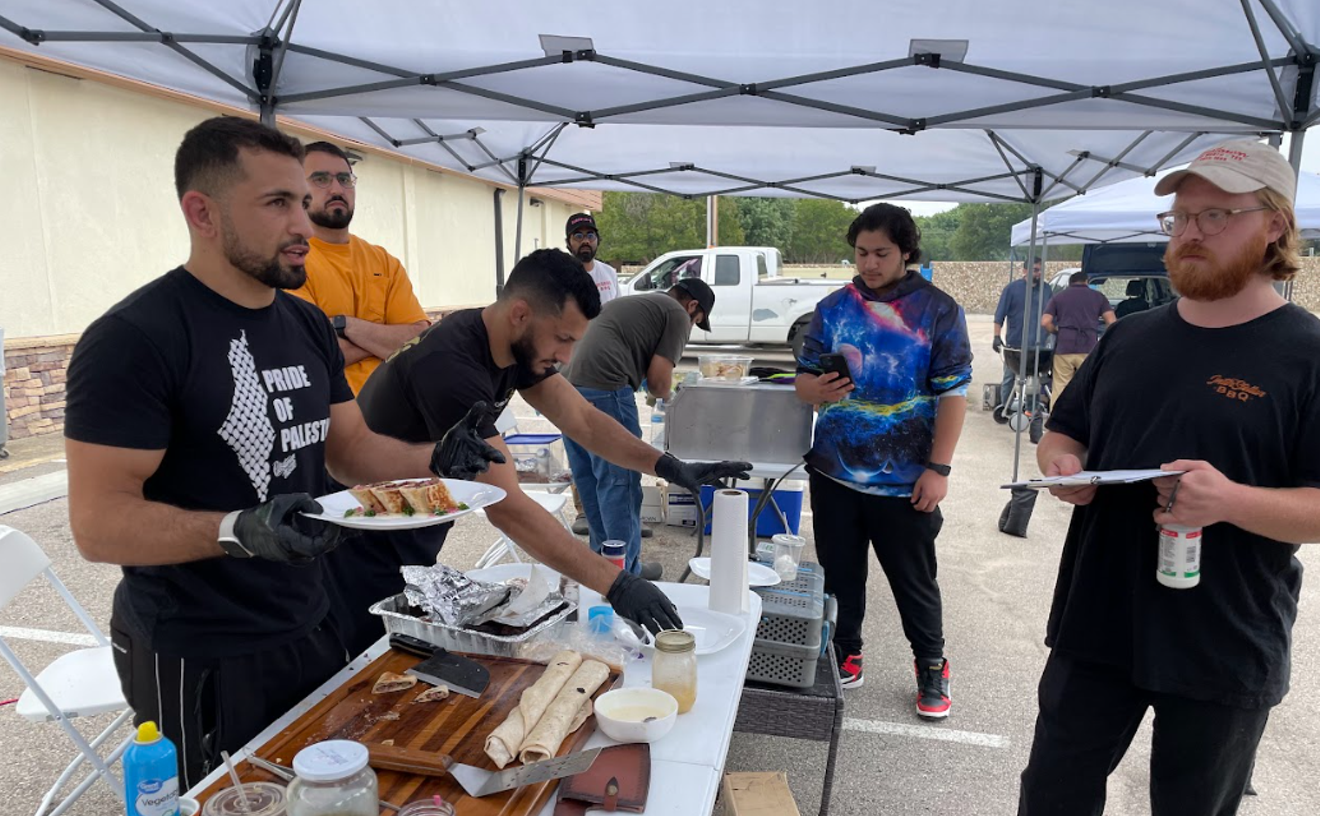Between bun bo hue and pho, it's obvious why pho is the more popular of the bowls. Filled with an aromatic, clean-tasting broth and a wad of tangled rice noodles, it's a distant cousin to American comfort food. Sure, some versions include strips of fuzzy bible tripe and gelatinous chunks of tendon, but that's only if you ask for them. Diners who are more cautious can have their bowls decorated with folds of pink flank steak that quickly cook to well done when they're added to the broth, or brisket that's been cooked to oblivion beforehand. Those with complete cultural agoraphobia can order a chicken pho that's not so different from the heart warmer that Campbell's made popular, just with bean sprouts and cilantro instead of saltines and sadness.
Bun bo hue, on the other hand, arrives brash and angry. Filled with a murky, brown-colored broth that smells of funk and shrimp paste, the bowl hides hunks of pork blood pudding, a meaty pig's knuckle with bones and connective tissue and slippery tapioca noodles that require advanced chopsticks skills. If pho is a polite soup that says please and thank you, bun bo hue is a soup that shows up unannounced and downs your favorite bottle of booze before parking on your couch for a slobbery nap.
It doesn't help that like pho, bun bo hue is often poorly made in thick and oily versions whose pork parts have a gaminess that recalls the lesser smells found in a barnyard. Have one of these bowls and you'll swear off the soup for life. But order the warm and comforting version served at Dong Que in Garland and you could find your soulmate in a ladle-shaped spoon. Hit the dark, almost muddy broth with a good squeeze of lime and watch the freshly chopped scallions come to life. Take a bite of the blood pudding and note its mild, mineral flavor. Stir in a little extra chile sauce if you'd like more heat. Suddenly pho seems ... boring.
Dong Que opened a little more than a year ago in a small strip mall with a Vietnamese grocery and Pho Bang, a small, nearly ramshackle restaurant that serves gritty and rustic cooking. Remember the first if you have a taste for alcohol, because your destination is BYOB, but pass over the other restaurants in favor of Dong Que's clean, bright dining room and fresh flavors that will expand your love for Vietnamese soups.
If bun bo hue is not for you, there is pho available. The broth wafts of cinnamon, but lacks the buzzy, MSG experience found in most inferior bowls, and the kitchen doesn't skimp on the extras. You won't be able to tell the thin tangles of tripe from the noodles if you order the special combination, nor will you be able to finish the meatballs.
There's an excellent beef congee, if you'd prefer something heartier. The rice porridge is thick with rice grains cooked until they start to fall apart, thickening the broth with starch like runny oatmeal. Each spoonful hits with plenty of Christmas cookie spice, bits of meat and grassy herbs. It's a hearty, stick-to-your bones soup.
The staff is not as comforting. Like many Vietnamese restaurants, the service starts with a "what do you want?" and ends with you walking to the register to retrieve your bill. But if they're not warm, the staffers are helpful, bringing a bottle opener for your six-pack of beer, or jotting down the name of fish mint in Vietnamese so you can track down the pungent herb that just floored you.
Much of the menu is served with rice paper wrappers and a plate of herbs and vegetables large enough to feed a farm animal, including the finely minced shrimp molded around a stick of sugar cane or the thin slices of steak to be cooked hot-pot-style in boiling vinegar. Fish mint, which tastes a bit like the bottom of a freshwater aquarium smells, joins Vietnamese cilantro, shiso leaves big enough to roll cigars, mint and purple basil. There are shreds of pickled daikon and carrots and cucumbers and more bean sprouts than any table could possibly use.
But the best use of this salad plate is undoubtedly embellishing the elongated meatballs of beef flavored with ginger, garlic and green onion. You can get them as la lot, wrapped in a betel leaf and grilled until charred, or as mo chai, wrapped in caul fat that melts away into a paper-thin membrane. Grab either a lettuce leaf or rice paper and do your best to prepare some sort of loosely contained bundle of ingredients. Don't be discouraged if your creation doesn't resemble the neatly rolled tubes that emerge from the kitchen. You only need enough structural integrity to get your ingredients in and out of the fish sauce. Repeat until you're about to pop, which is a serious hazard here.
The only way to make it through more than a dish or two at Dong Que is with the enthusiastic help of several friends. Portions are massive, and some options, like a seven-course beef dinner that somehow only costs $14.95 a person, will completely cover your table in an array of plates, accompaniments and condiments. You'll barely have any space for an order of egg rolls with crackling, glassy wrappers. You'll have to shuffle some plates to make room for drip coffee served with plenty of condensed milk and ice. You'll likely lose your chopsticks a few times and have to rip open the paper wrapper on a new set to proceed. But you won't go home hungry, and on the off chance you ordered and finished a bowl of bun bo hue, you'll go home with a whole new attitude.










